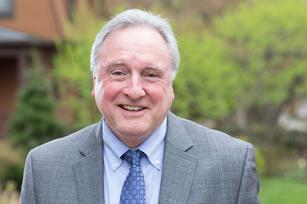
Breadcrumb
- Essential Partners
- Our Impact
- News and Notes
- Fieldwork: Lessons From Play
Fieldwork: Lessons From Play
The beginning of baseball season has me remembering. Most of the important lessons of my life happened to me when I was much younger. It’s just taken me all these years to get their meaning. I’m still discovering, for instance, the lessons I learned—good and bad—about how to treat other people.
When I was a kid growing up in Buffalo, NY, I lived above a store: Warren’s Delicatessen. Old Man Warren was from New York City. He said, “Boh’le” and “wawtah” and “ah-ringe," which sounded very exotic to our untraveled ears. He was a kind and gentle man who whistled his way through the day and presented us kids with “The Penny Box” (a box of assorted penny candies) when we ran into the store after our daily play in the big field next to our building, a place at once frightening and tempting. His presence provided safe haven after our exploits.
On hot mornings in the summer, my buddy Bobby Edwards would stand outside the entrance to the store, underneath my bedroom window and call “Oh Bobeee….Oh Bobeeeee!” That was my signal to get up, put on a fresh t-shirt and go out to play. “The field" was one of our favorite destinations. Bordered by two truck routes, it sat behind a Mobil gas station; Mobil's red neon flying horse lit up my bedroom at night. Because the field was behind the station, it was strewn with cool stuff: old oil cans, cast-off tires, greasy plywood, rusted car parts. The kinds of things that today’s parents (including me) would never let their kids touch. These items were invisible at first look, though, covered by high grass, prickly shrubs, brackish water, and crumbling mounds of trash dumped in the night by gypsy haulers. The regular inhabitants of our field were big grasshoppers, wasps, and rats the size of small cats. No one ever wanted to be there alone: way too scary. But when we were with the guys, the fear was subsumed under the veneer of team-bred bravado.
When we played, there was one game we returned to again and again: War. Under the shade of the pole that held the siren that sounded the frequent air raid drills of the 1950s and 60s, we made guns from sticks, grenades from car parts, and bombs from mud and oil cans. Our rivals were the kids from the next block: residential Parkwood. Man, we hated those guys. We were obviously better: we were from Kenmore Ave., a truck route. There were two rules: Hurt them. Protect your buddies.
Usually, the more we played war, the more we hated the kids from Parkwood and the more violent we got with our words and actions. We played hard till the streetlights came on or someone got hurt. Usually the latter. I still carry a little divot in my head.
But on Saturdays, we all—kids from both blocks—went to a different field: the field behind Charles A. Lindbergh Elementary School, the school we all attended. This field was different from the other. It was level, with a fence and baselines and grass. It was bright and open. On this field, there was a different kind of play. Certainly there was high energy, but it was channeled in agreed-upon ways. Kids were criticized by one another if they departed from an agreed-upon standard of “sportsmanship.” This field invited a different kind of game with a different set of purposes and different kinds of energy than the other. And we showed up differently, with different expectations of our enemies and ourselves. When we were there, we played baseball. And when we were done, we—Kenmore and Parkwood—went to Anderson’s Frozen Custard after the game.
So much of the public square is like that field behind the gas station: filled with trash, overgrown, easy to get lost in, inviting and supporting enmity and attack. People show up and wind up at each other’s throats. We need more baseball. We need more baseball fields. But in the current climate, I wonder: If we build it, will they come?
